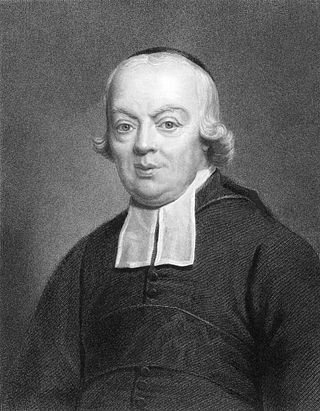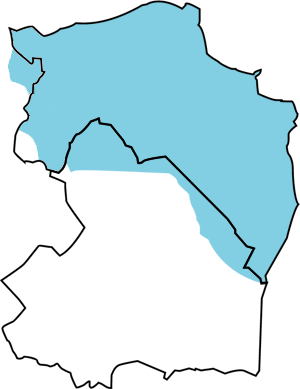
French Sign Language is the sign language of the deaf in France and French-speaking parts of Switzerland. According to Ethnologue, it has 100,000 native signers.
Oralism is the education of deaf students through oral language by using lip reading, speech, and mimicking the mouth shapes and breathing patterns of speech. Oralism came into popular use in the United States around the late 1860s. In 1867, the Clarke School for the Deaf in Northampton, Massachusetts, was the first school to start teaching in this manner. Oralism and its contrast, manualism, manifest differently in deaf education and are a source of controversy for involved communities. Listening and Spoken Language, a technique for teaching deaf children that emphasizes the child's perception of auditory signals from hearing aids or cochlear implants, is how oralism continues on in the current day.

Manualism is a method of education of deaf students using sign language within the classroom. Manualism arose in the late 18th century with the advent of free public schools for the deaf in Europe. These teaching methods were brought over to the United States where the first school for the deaf was established in 1817. Today manualism methods are used in conjunction with oralism methods in the majority of American deaf schools.

Gronings, is a collective name for some Low Saxon dialects spoken in the province of Groningen and around the Groningen border in Drenthe and Friesland. Gronings and the strongly related varieties in East Frisia have a strong East Frisian influence and take a remarkable position within West Low German. Its typical accent and vocabulary differ strongly from the other Low Saxon dialects.
The recorded history of sign language in Western societies starts in the 17th century, as a visual language or method of communication, although references to forms of communication using hand gestures date back as far as 5th century BC Greece. Sign language is composed of a system of conventional gestures, mimic, hand signs and finger spelling, plus the use of hand positions to represent the letters of the alphabet. Signs can also represent complete ideas or phrases, not only individual words.

Brabantian or Brabantish, also Brabantic or Brabantine, is a dialect group of the Dutch language. It is named after the historical Duchy of Brabant, which corresponded mainly to the Dutch province of North Brabant, the Belgian provinces of Antwerp and Flemish Brabant as well as the Brussels-Capital Region and the province of Walloon Brabant. Brabantian expands into small parts in the west of Limburg, and its strong influence on the Flemish dialects in East Flanders weakens toward the west. In a small area in the northwest of North Brabant (Willemstad), Hollandic is spoken. Conventionally, the Kleverlandish dialects are distinguished from Brabantian, but for no reason other than geography.
Flemish Sign Language is a deaf sign language of Belgium. It is closely related to French Belgian Sign Language, but they are now generally recognized as distinct languages. VGT is estimated to include around 6,000 sign-language users.
The legal recognition of signed languages differs widely. In some jurisdictions, a signed language is recognised as an official language; in others, it has a protected status in certain areas. Although a government may stipulate in its constitution that a "signed language" is recognised, it may fail to specify which signed language; several different signed languages may be commonly used.
Manually coded languages (MCLs) are a family of gestural communication methods which include gestural spelling as well as constructed languages which directly interpolate the grammar and syntax of oral languages in a gestural-visual form—that is, signed versions of oral languages. Unlike the sign languages that have evolved naturally in deaf communities, these manual codes are the conscious invention of deaf and hearing educators, and as such lack the distinct spatial structures present in native deaf sign languages. MCLs mostly follow the grammar of the oral language—or, more precisely, of the written form of the oral language that they interpolate. They have been mainly used in deaf education in an effort to "represent English on the hands" and by sign language interpreters in K-12 schools, although they have had some influence on deaf sign languages where their implementation was widespread.

Bellingwolde is a village with a population of 2,655 people in the municipality Westerwolde in the Netherlands. It is situated in the southeast of the region Oldambt, in the north of the region Westerwolde, and in the east of the province Groningen, at the border with Germany.

The predominant language of the Netherlands is Dutch, spoken and written by almost all people in the Netherlands. Dutch is also spoken and official in Aruba, Bonaire, Belgium, Curaçao, Saba, Sint Eustatius, Sint Maarten and Suriname. It is a West Germanic, Low Franconian language that originated in the Early Middle Ages and was standardised in the 16th century.
The Second International Congress on Education of the Deaf was an international conference of deaf educators held in Milan, Italy in 1880. It is commonly known as the "Milan Conference" or "Milan Congress". This Congress was preceded by the First International Congress in Paris in 1878. Joseph Marius Magnat, a Swiss former oralist, received a significant donation to organize the more well-known Second Congress two years hence.
Dutch dialects and varieties are primarily the dialects and varieties that are both cognate with the Dutch language and spoken in the same language area as the Standard Dutch. They are remarkably diverse and are found within Europe mainly in the Netherlands and northern Belgium.
Danish Sign Language is the sign language used in Denmark.

Charles-Michel de l'Épée was an 18th-century French philanthropic educator who has become known as the "Father of the Deaf". He founded Institut National de Jeunes Sourds de Paris, the first public school for the deaf, in 1760.

The Instituut voor Doven (IvD) was a deaf school, based in the south of the Netherlands for children who are deaf, hard-of-hearing and deaf-blind. It is referred by the deaf community as "gestel" when signed in Dutch Sign Language. The School was founded in 1840 by Father Martinus van Beek, a Roman Catholic priest. It was one of the five big deaf schools in the Netherlands.

Franciscus Hermanus Bach, officially Bachg, was a Dutch painter.
The establishment of schools and institutions specializing in deaf education has a history spanning back across multiple centuries. They utilized a variety of instructional approaches and philosophies. The manner in which the language barrier is handled between the hearing and the deaf remains a topic of great controversy. Many of the early establishments of formalized education for the deaf are currently acknowledged for the influence they've contributed to the development and standards of deaf education today.

Irma Sluis is a Dutch sign language interpreter. She is an interpreter in Dutch sign language (NGT) and international sign language (Gestuno) and has published about working as a sign language interpreter in the Netherlands. Since 2005 she has been working with the Dutch broadcasting organisation NOS where she interprets the morning news.
Brita Elisabeth Bergman is a Swedish emeritus professor specializing in the linguistics of signed languages. She initiated a line of research in signed language linguistics at the Department of Linguistics at Stockholm University that is still being carried out to this day.









